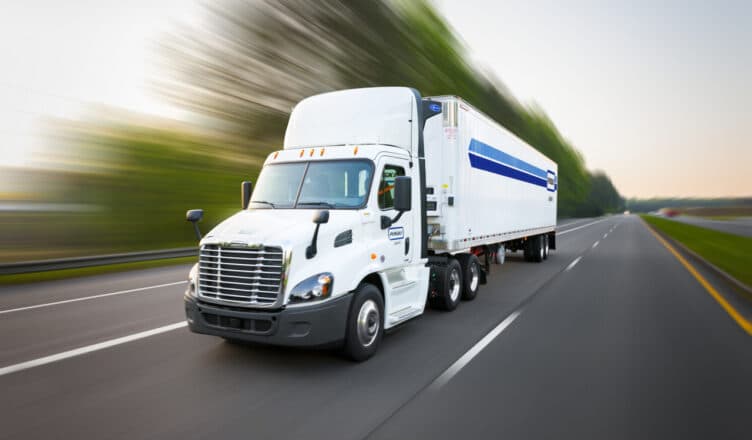The logistics sector has grappled with significant disruptions since the COVID-19 outbreak, with lasting impacts on supply chains and rising costs.
As a solution, providers have innovated, with land transport playing a pivotal role in bridging supply chain gaps. Despite facing issues like labor shortages and high fuel costs, there are ways to enhance its efficiency.
The Present State of Land Transportation
During the pandemic, the surge in online shopping stressed warehouse stocks and transportation networks. Logistics companies adapted by expanding services like courier and LTL offerings. With the aid of digital tools, they’ve flourished in this shifting market.
Even as the world reopened, the e-commerce boom persisted, compelling transport providers to constantly refine their services while ensuring customer value.
Now, several strategies are being put in place to streamline land transport and meet the growing demand:
Route Optimization
Route optimization is a cornerstone of efficient land transport. The goal of using sophisticated algorithms and GPS is to identify the fastest and most efficient delivery paths, thereby cutting down travel time, conserving fuel, and reducing vehicle stress.
Ultimately, it’s about transporting goods quickly, safely, and cost-effectively. Modern companies now incorporate real-time traffic insights and predictive analytics to enhance their routing further. This approach helps dodge traffic jams or construction zones, saving time and resources.
Shipment Consolidation
Shipment consolidation is another powerful strategy for boosting efficiency in logistics. Instead of sending out multiple small shipments, logistics businesses can combine them into fewer, larger ones. This approach not only reduces the number of trips needed but also maximizes the use of cargo space.
By consolidating shipments, companies can negotiate better freight rates due to the bulk nature of their consignments. Moreover, this approach reduces the carbon footprint, making the business more sustainable and environmentally friendly. Shipment consolidation presents a win-win situation for logistics businesses and the environment.
Data Analytics and AI
Data analytics and AI are transforming the logistics sector. These advanced tools can process huge amounts of data seamlessly, unveiling important trends and critical data insights that would be challenging for any human to manage on their own.
For instance, predictive analytics can forecast demand trends, enabling businesses to more accurately plan their inventory and transport needs. This leads to minimized wastage and maximized profitability. Meanwhile, AI can automate various tasks, such as scheduling and tracking shipments, freeing staff to focus on more strategic activities.
AI can also help in predicting potential issues before they become a problem. By analyzing historical data, AI can identify patterns indicating a potential delay or breakdown in the supply chain, allowing businesses to take preemptive measures.
Intermodal Logistics
Intermodal logistics is an innovative approach that involves using different modes of transport – such as trucks, trains, and ships – to move goods from the origin to the destination. The aim is to capitalize on the strengths of each mode while minimizing their weaknesses.
For instance, while trucks offer flexibility and door-to-door service, rail and sea transport are more cost-effective and environmentally friendly for long-distance hauls.
The key to successful intermodal logistics is seamless coordination and integration between the various modes. Advanced software systems can help manage the complexities of intermodal transport, ensuring that transfers are smooth and timely. By doing so, companies can optimize their supply chain, reduce transit times, lower costs, and minimize environmental impact.
Effective Maintenance and Repairs
Regular vehicle maintenance is key to enhancing land transport efficiency. Routine checks can avert breakdowns, extend vehicle lifespan, and minimize repair costs and downtime, boosting operational efficiency.
Technology is pivotal in this area. Potential issues can be detected early through predictive maintenance using AI and machine learning. Vehicle sensors keep tabs on engine heat, tire pressure, and fuel use, allowing for timely predictions about parts needing service.
Furthermore, mobile apps and online platforms streamline repair scheduling and provide a detailed record of each vehicle’s service history. This aids logistics companies in managing their fleets and ensuring road readiness.
Optimizing Warehouse Operations for Efficiency
The warehouse is a vital cog in the logistics machine, and optimizing its operations can significantly streamline land transport. Efficient warehouse operations ensure that goods are processed and ready for transport in a timely manner, reducing delays and improving overall logistics performance.
There are several innovative ways to enhance warehouse efficiency:
- Warehouse Management Systems (WMS): Implementing a robust Warehouse Management System is a game-changer. These systems provide real-time tracking of inventory levels, orders, and deliveries, enabling managers to make informed decisions.
- Layout Optimization: The layout of the warehouse can have a significant impact on efficiency. A well-designed warehouse minimizes travel time within the facility and facilitates smoother movement of goods.
- Use of Automation and Robotics: Automation and robotics are increasingly used in warehouses to boost efficiency. For instance, automated storage and retrieval systems (AS/RS) can quickly locate and transport goods within the warehouse, reducing the need for manual labor.
Supporting Better Ways to Manage Transportation
Efficient road freight is essential for logistics companies, particularly in the face of ongoing disruptions within the industry. By optimizing routes, embracing technology, and taking proactive measures with your fleet, you can streamline land transport operations and maintain a competitive edge.
Author Bio:
Joe Jaska
Joe Jaska is the Head of Land Product for Region Americas at DB Schenker, a role he has held since early 2020. He has full P&L responsibilities for 24 countries in North, Central, and South America, leading land transport to ensure quick and reliable delivery to all major destinations across the continent. Joe ensures full or partial truckloads move across the continent or across borders without delay.






